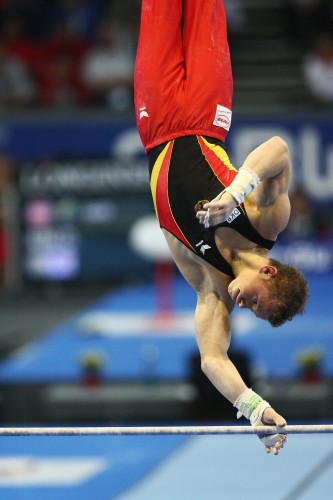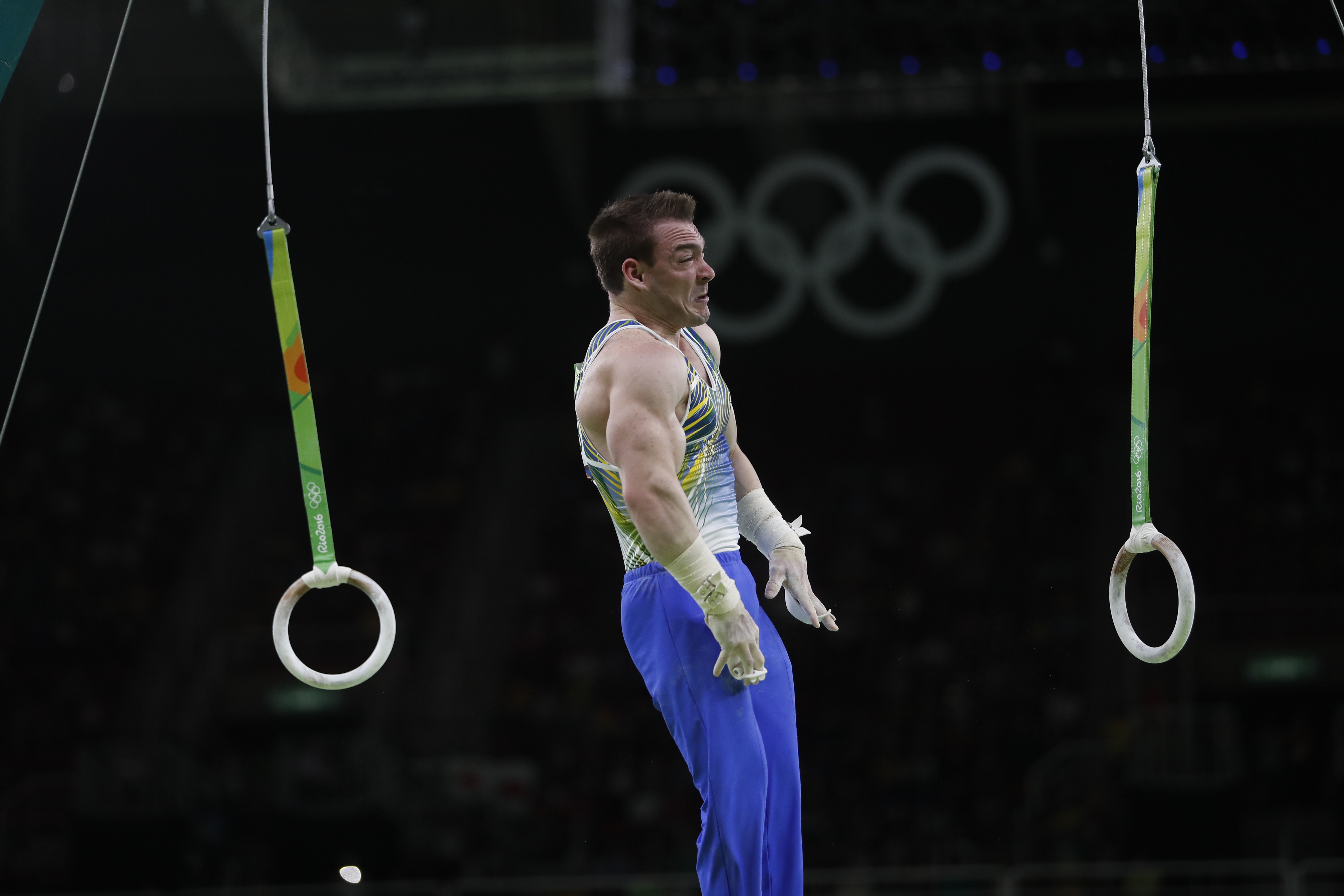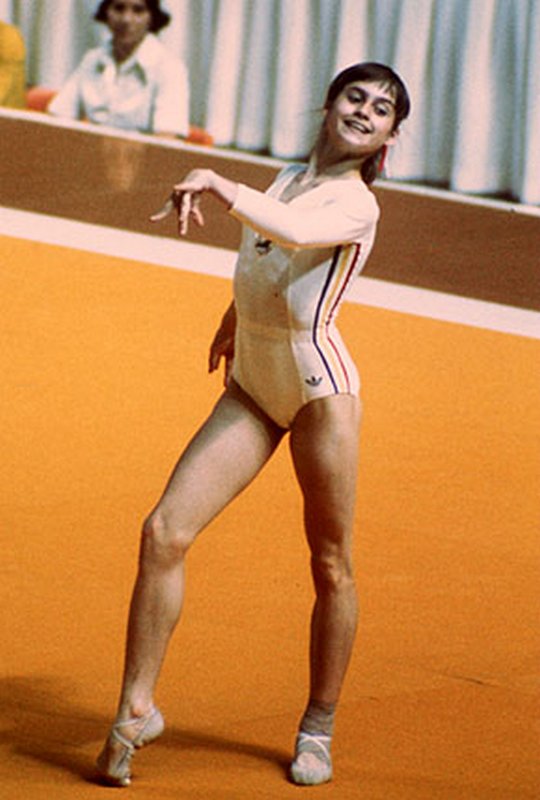|
Anton Golotsutskov
Anton Sergeyevich Golotsutskov (russian: Антон Серге́евич Голоцуцков, born July 28, 1985) is a retired Russian gymnast. He won two bronze medals (in floor and vault) at the 2008 Summer Olympics. Competitive history See also *List of Olympic male artistic gymnasts for Russia Russian male artistic gymnasts have competed at every Olympic Games since 1996. In total, there have been 29 Russian male gymnasts who have competed at the Olympics. Gymnasts ''Note:'' The following only counts medals won by gymnasts when they ... References * External links * 1985 births Living people People from Seversk Russian male artistic gymnasts Gymnasts at the 2004 Summer Olympics Gymnasts at the 2008 Summer Olympics Olympic gymnasts for Russia Olympic bronze medalists for Russia Medalists at the World Artistic Gymnastics Championships Olympic medalists in gymnastics Medalists at the 2008 Summer Olympics European champions in gymnastics Sportspeopl ... [...More Info...] [...Related Items...] OR: [Wikipedia] [Google] [Baidu] |
Seversk
Seversk ( rus, Се́верск, p=ˈsʲevʲɪrsk) is a closed city in Tomsk Oblast, Russia, located northwest of Tomsk on the right bank of the Tom River. Population: It was previously known as ''Pyaty Pochtovy'' (until 1949) and ''Tomsk-7'' (until 1992). Climate Seversk has a humid continental climate (Köppen climate classification ''Dfb'') with warm summer. The annual average temperature is 0.6 °C (33°F). The average temperature in January is between -21 °C (-6°F) and -13 °C (-9°F). The average temperature in July is 19.2 °C (67°F). The total annual rainfall is 530 millimeters (21"). History Founded in 1949, it was known as Pyaty Pochtovy (, lit. ''the Fifth Postal'') until 1954 and as Tomsk-7 () until 1992. City status was granted to it in 1956. Administrative and municipal status Within the framework of administrative divisions, it is, together with five rural localities, incorporated as Seversk City Under Oblast Jurisdiction—an administrative unit with the ... [...More Info...] [...Related Items...] OR: [Wikipedia] [Google] [Baidu] |
2012 European Men's Artistic Gymnastics Championships
The 30th European Men's Artistic Gymnastics Championships was held from 23 to 27 May 2012 at Montpellier. The senior and junior events are different. During the senior's qualification the top eight teams progress to the team final, and the top eight gymnasts (two per nation maximum) on each apparatus qualify for the individual finals. After the qualification for the juniors the team medals and places are awarded. Unlike the seniors in this event the top 24 gymnasts (two per nation maximum) compete in the all around final. ---- Oldest and youngest competitors ---- Medal winners Detail results Seniors Team Oldest and youngest competitors Floor Oldest and youngest competitors Pommel horse Oldest and youngest competitors Rings Oldest and youngest competitors Vault Oldest and youngest competitors Parallel bars Oldest and youngest competitors Horizontal bar Oldest and youngest competitors Juniors All round Old ... [...More Info...] [...Related Items...] OR: [Wikipedia] [Google] [Baidu] |
People From Seversk
A person ( : people) is a being that has certain capacities or attributes such as reason, morality, consciousness or self-consciousness, and being a part of a culturally established form of social relations such as kinship, ownership of property, or legal responsibility. The defining features of personhood and, consequently, what makes a person count as a person, differ widely among cultures and contexts. In addition to the question of personhood, of what makes a being count as a person to begin with, there are further questions about personal identity and self: both about what makes any particular person that particular person instead of another, and about what makes a person at one time the same person as they were or will be at another time despite any intervening changes. The plural form "people" is often used to refer to an entire nation or ethnic group (as in "a people"), and this was the original meaning of the word; it subsequently acquired its use as a plural form of p ... [...More Info...] [...Related Items...] OR: [Wikipedia] [Google] [Baidu] |
Living People
Related categories * :Year of birth missing (living people) / :Year of birth unknown * :Date of birth missing (living people) / :Date of birth unknown * :Place of birth missing (living people) / :Place of birth unknown * :Year of death missing / :Year of death unknown * :Date of death missing / :Date of death unknown * :Place of death missing / :Place of death unknown * :Missing middle or first names See also * :Dead people * :Template:L, which generates this category or death years, and birth year and sort keys. : {{DEFAULTSORT:Living people 21st-century people People by status ... [...More Info...] [...Related Items...] OR: [Wikipedia] [Google] [Baidu] |
1985 Births
The year 1985 was designated as the International Youth Year by the United Nations. Events January * January 1 ** The Internet's Domain Name System is created. ** Greenland withdraws from the European Economic Community as a result of a new agreement on fishing rights. * January 7 – Japan Aerospace Exploration Agency launches '' Sakigake'', Japan's first interplanetary spacecraft and the first deep space probe to be launched by any country other than the United States or the Soviet Union. * January 15 – Tancredo Neves is elected president of Brazil by the Congress, ending the 21-year military rule. * January 20 – Ronald Reagan is privately sworn in for a second term as President of the United States. * January 27 – The Economic Cooperation Organization (ECO) is formed, in Tehran. * January 28 – The charity single record " We Are the World" is recorded by USA for Africa. February * February 4 – The border between Gibraltar an ... [...More Info...] [...Related Items...] OR: [Wikipedia] [Google] [Baidu] |
List Of Olympic Male Artistic Gymnasts For Russia
{{Gymnastics at the Summer Olympics ...
Russian male artistic gymnasts have competed at every Olympic Games since 1996. In total, there have been 29 Russian male gymnasts who have competed at the Olympics. Gymnasts ''Note:'' The following only counts medals won by gymnasts when they represented Russia or the Russian Olympic Committee (Not the Unified Team or the Soviet Union). Example: Aleksey Voropayev won a gold medal with the Unified Team in 1992, but only the gold medal he won in 1996 appears here. Medalists See also * List of Olympic female artistic gymnasts for Russia References * gymnasts Russia Russia (, , ), or the Russian Federation, is a transcontinental country spanning Eastern Europe and Northern Asia. It is the largest country in the world, with its internationally recognised territory covering , and encompassing one-eigh ... [...More Info...] [...Related Items...] OR: [Wikipedia] [Google] [Baidu] |
Horizontal Bar
The horizontal bar, also known as the high bar, is an apparatus used by male gymnasts in artistic gymnastics. It traditionally consists of a cylindrical metal (typically steel) bar that is rigidly held above and parallel to the floor by a system of cables and stiff vertical supports. Gymnasts typically wear suede leather grips while performing on the bar. Current elite-level competition uses a stainless steel core rail. The gymnastics elements performed on the horizontal bar are regulated by a Code of Points. A bar routine, which is a sequence of several bar skills, usually includes giants with various grips (overgrip, undergrip, dorsal grip, mixed grip), in-bar work, turns, release and regrasp skills, and a dismount. The horizontal bar is often considered one of the most exciting gymnastics events due to the power exhibited by gymnasts during giant swings and spectacular aerial releases and dismounts that often include multiple flips or twists and, in some cases, airborne t ... [...More Info...] [...Related Items...] OR: [Wikipedia] [Google] [Baidu] |
Gymnastics Parallel Bars
Parallel bars are floor apparatus consisting of two wooden bars slightly over long and positioned at roughly head height. Parallel bars are used in artistic gymnastics and also for physical therapy and home exercise. Gymnasts may optionally wear grips when performing a routine on the parallel bars, although this is uncommon. Apparatus The apparatus consists of two parallel bars that are held parallel to, and elevated above, the floor by a metal supporting framework. The bars are composed of wood or other material, with an outer coating of wood. The vertical members of the supporting framework are adjustable so the height of the bars above the floor and distance between the bars can be set optimally for each gymnast. Dimensions *Bar length: ± *Bar rounded profile: ± vertical by ± horizontal *Bar width: ± *Height of bar from floor: ± *Distance between bars: – (adjustable) History The parallel bars (in German ''Barren'') were invented by Friedrich Ludwig ... [...More Info...] [...Related Items...] OR: [Wikipedia] [Google] [Baidu] |
Gymnastics Vault
The vault is an artistic gymnastics apparatus which gymnasts perform on, as well as the skill performed using that apparatus. Vaulting is also the action of performing a vault. Both male and female gymnasts perform the vault. The English abbreviation for the event in gymnastics scoring is VT. The apparatus Early forms of the vault were invented by German Friedrich Ludwig Jahn. The apparatus itself originated as a "horse", much like the pommel horse but without the handles; it was sometimes known as the vaulting horse. The horse was set up with its long dimension perpendicular to the run for women, and parallel for men.What's With That Weird New Vault? an August 2004 "Explainer" article from '''' [...More Info...] [...Related Items...] OR: [Wikipedia] [Google] [Baidu] |
Gymnastics Rings
The rings, also known as still rings (in contrast to flying rings), is an artistic gymnastics apparatus and the event that uses it. It is traditionally used only by male gymnasts, due to its extreme upper body strength requirements. Gymnasts often wear ring grips while performing. The apparatus The apparatus consists of two rings that hang freely from a rigid metal frame. Each ring is supported by a strap, which in turn connects to a steel cable that is suspended from the metal frame. The gymnast, who grips one ring with each hand, must control the movement of the rings and his or her body movements at all times. Dimensions The measurements of the standard apparatus are specified by Fédération Internationale de Gymnastique (FIG) in its ''Apparatus Norms'' document: * Inner diameter: ± * Diameter of profile: ± * Distance from point of attachment to lower inner side of the rings: ± * Distance between two points of attachment: ± Routines An exercise on rings ... [...More Info...] [...Related Items...] OR: [Wikipedia] [Google] [Baidu] |
Pommel Horse
The pommel horse is an artistic gymnastics apparatus. Traditionally, it is used by only male gymnasts. Originally made of a metal frame with a wooden body and a leather cover, the modern pommel horse has a metal body covered with foam rubber and leather, with plastic handles (or pommels). Apparatus History The apparatus originates from the Romans, who used wooden horses to teach mounting and dismounting. They later added it to the ancient Olympic Games. The basic modern exercises were developed in the early 19th century by Friedrich Ludwig Jahn, founder of the German Turnverein. Dimensions Measurements of the apparatus are published by the Fédération Internationale de Gymnastique (FIG) in the ''Apparatus Norms'' brochure. * Height from top surface to floor: ± * Length at top: ± * Length at bottom: ± * Width at top: ± * Width at bottom: ± * Height of the pommels: ± * Distance between the pommels: – (adjustable) Routines A typical pommel ... [...More Info...] [...Related Items...] OR: [Wikipedia] [Google] [Baidu] |
Gymnastics Floor
In gymnastics, the floor is a specially prepared exercise surface, which is considered an apparatus. It is used by both male and female gymnasts. The gymnastics event performed on the floor is called floor exercise. The English abbreviation for the event in gymnastics scoring is FX. A spring floor is used in all of gymnastics to provide more bounce, and also help prevent potential injuries to lower extremity joints of gymnasts due to the nature of the apparatus, which includes the repeated pounding required to train it. Cheerleading also uses spring floors for practice. The sprung floor used for indoor athletics, however, is designed to reduce bounce. The apparatus The apparatus originated as a 'free exercise' for men, very similar to the floor exercise of today. Most competitive gymnastics floors are spring floors. They contain springs and/or a rubber foam and plywood combination which make the floor bouncy, soften the impact of landings, and enable the gymnast to gain heigh ... [...More Info...] [...Related Items...] OR: [Wikipedia] [Google] [Baidu] |

_1938.jpg)







